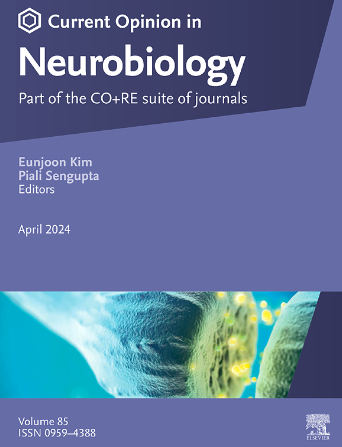The role of microheterogeneity in cell fate decisions in neural progenitors and neural crest
IF 5.2
2区 医学
Q1 NEUROSCIENCES
引用次数: 0
Abstract
Neuroprogenitors must integrate a multitude of signals, including gradients of morphogens, transcriptional programs, and temporal cues to generate an astonishing diversity of cell types inhabiting the nervous system. How do these different layers of information come together to influence cell fate in progenitor cells in a coordinated way? Here we provide a nuanced perspective on cell fate selection in the nervous system and neural crest lineage, suggesting that it is not a straightforward, deterministic process governed by rigid on-off switches. Instead, the process involves probabilistic transitions influenced by small variations - termed “microheterogeneity” - within a progenitor cell population. These minuscule differences between individual neural progenitor cells can result in significantly different outcomes, making certain fates more probable for some cells than others. Here we discuss the diversity of such examples and the theory behind, also providing future perspectives.
微异质性在神经祖细胞和神经嵴细胞命运决定中的作用
神经祖细胞必须整合大量的信号,包括形态因子的梯度、转录程序和时间线索,以产生栖息在神经系统中的细胞类型的惊人多样性。这些不同层次的信息是如何以一种协调的方式聚集在一起影响祖细胞的细胞命运的?在这里,我们对神经系统和神经嵴谱系中的细胞命运选择提供了一个细致入微的视角,表明它不是一个由严格的开关控制的直接的、确定性的过程。相反,这一过程涉及到受祖细胞群内微小变异(称为“微异质性”)影响的概率转变。单个神经祖细胞之间的这些微小差异可能导致显著不同的结果,使某些细胞的某些命运比其他细胞更有可能发生。在这里,我们讨论了这些例子的多样性和背后的理论,也提供了未来的观点。
本文章由计算机程序翻译,如有差异,请以英文原文为准。
求助全文
约1分钟内获得全文
求助全文
来源期刊

Current Opinion in Neurobiology
医学-神经科学
CiteScore
11.10
自引率
1.80%
发文量
130
审稿时长
4-8 weeks
期刊介绍:
Current Opinion in Neurobiology publishes short annotated reviews by leading experts on recent developments in the field of neurobiology. These experts write short reviews describing recent discoveries in this field (in the past 2-5 years), as well as highlighting select individual papers of particular significance.
The journal is thus an important resource allowing researchers and educators to quickly gain an overview and rich understanding of complex and current issues in the field of Neurobiology. The journal takes a unique and valuable approach in focusing each special issue around a topic of scientific and/or societal interest, and then bringing together leading international experts studying that topic, embracing diverse methodologies and perspectives.
Journal Content: The journal consists of 6 issues per year, covering 8 recurring topics every other year in the following categories:
-Neurobiology of Disease-
Neurobiology of Behavior-
Cellular Neuroscience-
Systems Neuroscience-
Developmental Neuroscience-
Neurobiology of Learning and Plasticity-
Molecular Neuroscience-
Computational Neuroscience
 求助内容:
求助内容: 应助结果提醒方式:
应助结果提醒方式:


